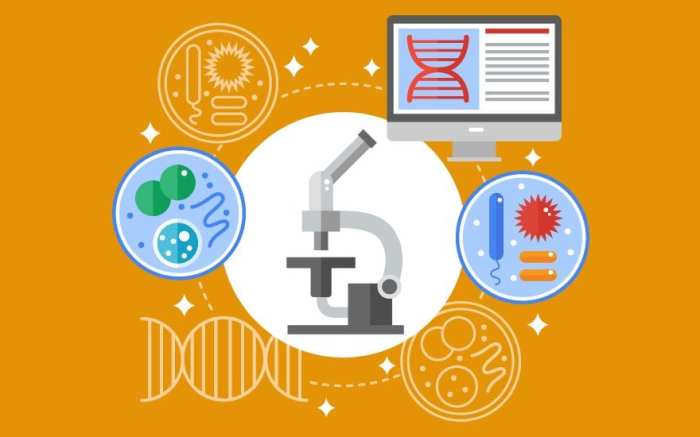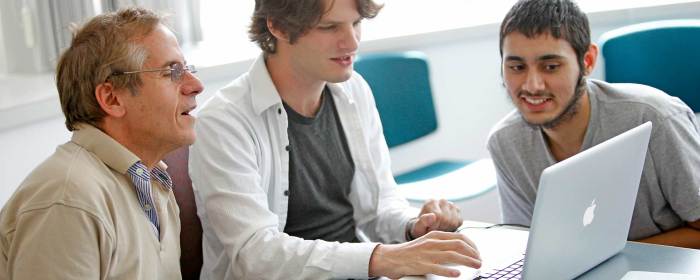Microbiology for non science majors – Microbiology for non-science majors embarks on an enthralling journey into the realm of the microscopic, revealing the profound significance and ubiquitous presence of microorganisms in our lives.
This comprehensive guide unravels the intricate world of microbes, their diverse forms, and their multifaceted roles in shaping our planet and our very existence.
Introduction to Microbiology

Microbiology is the study of microorganisms, which are living organisms that are too small to be seen with the naked eye. Microorganisms include bacteria, archaea, fungi, protozoa, and viruses. They are found in all environments on Earth, from the deepest oceans to the highest mountains.
Microorganisms play a vital role in the cycling of nutrients, the decomposition of organic matter, and the production of oxygen.
The history of microbiology dates back to the 17th century, when Antonie van Leeuwenhoek first observed and described microorganisms using a simple microscope. Since then, microbiology has berkembang pesat, and we now know that microorganisms are essential for life on Earth.
Basic Concepts of Microbiology: Microbiology For Non Science Majors

Microorganisms are single-celled organisms that lack a nucleus or other membrane-bound organelles. They are typically much smaller than plant and animal cells, and they have a simpler structure. Microorganisms can be classified into two main groups: prokaryotes and eukaryotes.
Prokaryotes are the simplest type of microorganisms. They do not have a nucleus or other membrane-bound organelles. Prokaryotes include bacteria and archaea.
Eukaryotes are more complex than prokaryotes. They have a nucleus and other membrane-bound organelles. Eukaryotes include fungi, protozoa, and algae.
Microorganisms can reproduce either asexually or sexually. Asexual reproduction is the process by which a single cell divides into two identical cells. Sexual reproduction is the process by which two cells fuse together to form a new cell.
Microbial Ecology

Microbial ecology is the study of the interactions between microorganisms and their environment. Microorganisms play a vital role in the cycling of nutrients, the decomposition of organic matter, and the production of oxygen. They also play a role in the development of the immune system and in the pathogenesis of disease.
There are many different types of microbial ecosystems. Some of the most common include the human microbiome, the soil microbiome, and the aquatic microbiome. The human microbiome is the community of microorganisms that live on and in the human body.
The soil microbiome is the community of microorganisms that live in the soil. The aquatic microbiome is the community of microorganisms that live in water.
Microbial Pathogenesis
Microbial pathogenesis is the study of the mechanisms by which microorganisms cause disease. Microorganisms can cause disease by a variety of mechanisms, including the production of toxins, the invasion of host cells, and the disruption of the immune system.
There are many different types of microbial pathogens. Some of the most common include bacteria, viruses, fungi, and protozoa. Bacteria are the most common type of microbial pathogen. They cause a wide range of diseases, including pneumonia, tuberculosis, and food poisoning.
Microbial Applications

Microorganisms have a wide range of applications in industry, agriculture, and medicine. Microorganisms are used to produce antibiotics, vaccines, and other pharmaceuticals. They are also used to produce food, beverages, and other products.
Microorganisms can also be used to clean up pollution and to recycle waste. For example, microorganisms can be used to break down oil spills and to remove heavy metals from water.
Microbiology in Everyday Life
Microorganisms play a vital role in our everyday lives. They are responsible for the production of food, beverages, and other products. They also play a role in the cycling of nutrients and the decomposition of organic matter.
Microorganisms can also be harmful. They can cause disease, and they can also spoil food and other products. However, the vast majority of microorganisms are harmless, and many are actually beneficial.
Question Bank
What is the significance of microbiology?
Microbiology plays a pivotal role in various fields, including medicine, agriculture, biotechnology, and environmental science, providing insights into disease prevention, food production, industrial processes, and ecosystem dynamics.
How do microorganisms impact human health?
Microorganisms can be both beneficial and harmful to human health. Beneficial microbes aid in digestion, nutrient absorption, and immune system function, while harmful microbes can cause infections and diseases.
What are the different types of microorganisms?
Microorganisms encompass a diverse range of organisms, including bacteria, archaea, fungi, protozoa, and viruses, each with unique characteristics and ecological roles.